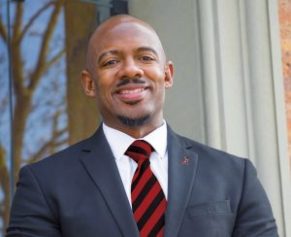James Hood became a civil rights icon because he wanted an education. He died on Thursday at the age of 70.
In 1963, the school Hood wanted to attend, The University of Alabama, happened to be in the last state to integrate its school system. Alabama Gov. George Wallace, just five months earlier during his inauguration speech, had memorably pronounced, “Segregation now, segregation tomorrow, segregation forever.”
Because Wallace had vowed that he would physically stand at the front door of any school ordered by the federal courts to admit black students, Hood and Wallace had an unforgettable confrontation at the university when the governor refused entry to him and another black student, Vivian Malone.
Culpepper Clark, who wrote “The Schoolhouse Door: Segregation’s Last Stand at the University of Alabama,” said the schoolhouse door incident was “an iconic moment” in the civil rights movement because it provided a tangible confrontation between Wallace and the Kennedy administration. He said the “symbolically important” incident helped lead to passage of the Voting Rights Act.
After Wallace refused entry to Hood and Malone, who were accompanied by U.S. Deputy Attorney General Nicholas Katzenbach, President John Kennedy federalized the National Guard. Hood and Malone returned later in the day. This time they entered the auditorium through a side door, with an escort from the National Guard. General Henry Graham of the National Guard asked Wallace to step aside. He complied and let Hood and Vivian Malone register for classes.
Before Hood died on Thursday in his hometown of Gadsden, Ala., he was the last remaining member of the famous confrontation. Wallace, who eventually renounced his earlier racist positions, died in 1998, while Vivian Malone Jones died in 2005 and Katzenbach last year.
After enrolling at Alabama, Hood only stayed there for a few months before moving to Michigan and enrolling at Wayne State University. After receiving a bachelor’s degree from Wayne State, he got his master’s degree from Michigan State. He later moved to Wisconsin, working for 26 years at the Madison Area Technical College, eventually retiring in 2002 as chairman of public safety services in charge of police and fire training.
He returned to UA to earn his doctorate in 1997.
University of Alabama President Judy Bonner said Hood was a man of “courage and conviction.”
“His connection to the university continued decades later when he returned to UA to earn his doctorate in 1997. He was a valued member of The University of Alabama community, and he will be missed. Our thoughts and prayers are with his family during this difficult time,” Bonner said.
Clark, the author, said Hood was a man with a lot of “intellectual energy” who understood the importance of what he did at The University of Alabama in 1963.
“He didn’t try to make it into more than what it was,” Clark said.
Samory Pruitt, vice president for community affairs at UA, said Hood opened doors.
“Because of what he did, people like me were afforded the opportunity to go to The University of Alabama,” said Pruitt, who is black. “I think it’s about people having the opportunity to be the best they can be.”
After Wallace died in 1998, Hood went to the funeral and said he had forgiven the governor. “I think he made peace with God,” Hood told The New York Times.


